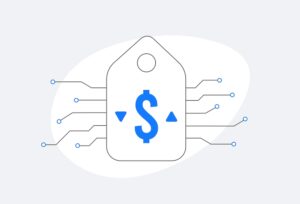 The customer journey begins anonymously. It can take hours, weeks or months, and can span multiple online and offline interactions. Many times, customers don’t know they are on a journey, they just want to be understood, respected and served at the right time.
The customer journey begins anonymously. It can take hours, weeks or months, and can span multiple online and offline interactions. Many times, customers don’t know they are on a journey, they just want to be understood, respected and served at the right time.
For marketers, this is no easy task. Marketers have the technology and knowledge to understand, predict and deliver relevant consumer interactions, but this is easier said than done.
Let’s take email for example. Did you know consumers spend an average of 6 hours per day checking email? With such mindshare, you would think marketers would stop the disjointed batch and blast method and start being smarter about how they use email to facilitate and enhance the customer journey.
Not too long ago, it may have been tempting to open an email with your name in the subject line, but in this connected world consumers know better. If the content is not relevant, the resulting experience is frustration and fatigue. Think about sending an email to a high value customer with an offer to purchase something they already bought. Or sending a ‘we want you back’ email to a customer who hasn’t been online in a while because they prefer to shop in–store.
The key to creating the best customer experience possible is data. Data needs to reflect more than just past click-behavior or online purchase behavior. It needs to provide context, typically found from a number of data sources such as online and offline purchase history, location, time of day, day of week, cross-channel promotion history, third party data and more.
The Problem With Data
For most marketers, data exists in silos. Separate and fragmented systems that reside in different places, exist in different formats, and are used for different purposes. In other words context and relevance is hard for them because they can’t connect the dots to create a high-definition view of the entire customer journey. When companies rely solely on data gathered from online behavior, they often miss half the equation. Many online customers are offline shoppers as well, interacting with brands through multiple touch points.
With data coming from so many different places, it can be difficult for a company to develop a consolidated view and an integrated approach to cross-channel marketing. It requires too much data maneuvering, the data’s not always in sync, and there’s lots of room for error.
To minimize the opportunity cost and maximize the value of your customer, it is worth going through the effort to create a consolidated view. They will appreciate it and so will you. There is significant value in terms of engagement, loyalty and ROI when you connect with customers in a contextual and revelant way.
Mapping the Customer Journey
As mentioned above, understanding the customer journey is vital because relevance increases lifetime value, conversion, and ROI. A good way to start is to think about your customer’s journey, from anonymous click to increasing engagement. And, think about it from your customers point of view. What is their experience? Then optimize that experience by collecting the right data, applying the right content, and orchestrating valuable exchanges of information as well as promotional offers when it is right.
Sometimes a simple ‘thank you’, or ‘here’s a cool tip to make your life easier’ can bring greater engagement than a constant “special” offer. The special offer no longer becomes special after a while, unless it is extremely timely, contextual, and yes, relevant. Whether it’s call centers or in store, the best way to look at the customer journey is from the customer’s perspective. Company thinking is typically channel-centric, but consumers don’t think that way. They just want good, consistent experiences that are seamless and pleasant.
The Right Data to Consider
Behavioral data tends to be the most impactful and predictive. Examples include what a customer has purchased, how/when they’ve visited your business, and how much they’ve spent (i.e. what is their value?). If appropriate to your business model, you might want to consider a preference center, which are often overlooked or underutilized.
Preference centers can include subscription-type preferences such as the kinds of communications customers want to receive from a company, their preferred communication channels, and/or consumer interests. For example, if you’re an online provider of content who has newsletters on 20 different subjects, which ones are most important to a particular customer? Customers won’t open emails that are irrelevant, so respecting their preferences can go a long way in developing trust and loyalty.
Don’t Do Everything at Once
We’ve seen that knocking down data silos allows marketers to gain better views of customer journeys, giving them the data to do personalization right. Keep in mind that overcoming data silos is a process, and companies shouldn’t try to do everything at once. Break down the process into smaller projects and gain control over the data that helps you to be most relevant to your customers.
Kerry Reilly is director of product marketing for Adobe Campaign.
Related Articles:
6 Tips for the Perfect Customer Journey
Live From Adobe: The Social Sides of Comedy Central, McDonalds and George Clooney

 Network
Network

